What No One Tells You About Visiting Kashmir.
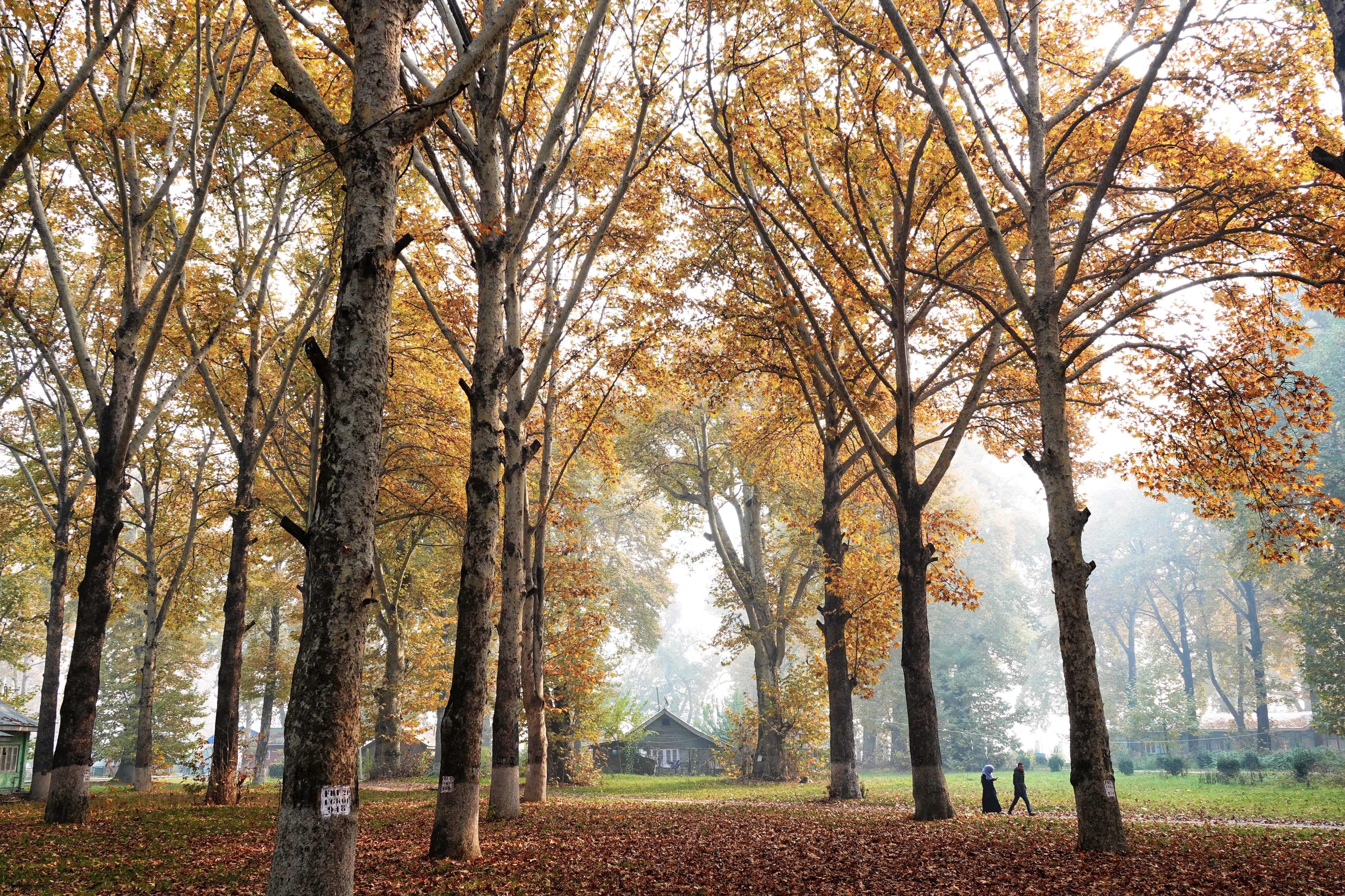
Two weeks before we set out for Kashmir, some heartbreaking targeted killings had disrupted peace in the valley. Worried about whether it would be safe to travel, we contemplated cancelling our long-awaited trip.
To help decide, I sent a message to our Airbnb hostess in Srinagar, asking about the situation on the ground. She replied, quite astutely, that there’s trouble everywhere but only in Kashmir is it constantly reported in the media.
Others I reached out to in Kashmir had similar advice. So we decided to take a leap of faith and arrived in Srinagar on a nippy autumn evening.
I’m glad we did, because over nearly a month, I came to realise that there is more to Kashmir than both – the overly negative one-sided media narrative of “trouble,” and the overly positive one-sided traveller narrative of “jannat” (heaven):
There are many layers to Kashmir
On our second day in Kashmir, we drove to the outskirts of Srinagar with a local friend. He turned off the main road into a by-lane, and drove into a desolate, abandoned military compound, with only barbed wires and no sign of human activity.
As my heart skipped a beat while he parked, I began to hear the faint strains of a guitar pour out of a Stalinist-style nondescript barrack. It turned out that we had arrived at one of Kashmir’s only music academies, run by singer duo Irfan-Bilal! Over the next few hours, we heard aspiring young musicians play the ancient rhubarb, and women from far-off reaches of Kashmir play the guitar to Sufi rhythms. The school is bringing about a renaissance of devotional Sufi music by making it more appealing to the youth – who have seen years of turmoil in the valley.
Every single day in Kashmir, we peeled back layer after layer, of Kashmiri history, culture, music, nature and politics – realizing how little actually makes it to mainstream news channels and travel blogs.
Also read: Should Travel Bloggers and Influencers Voice Their Political Opinions?
Fear, not hope, is the dominant emotion
Having read much about Kashmir, I went in fully prepared to expect military and police presence everywhere. But to see armed officers in bunkers and bushes across Srinagar and other populated towns, patrolling the streets at all hours, often stopping young men on bikes and scooters, is unnerving to say the least.
On a day trip from Srinagar, we had to squeeze our car next to a roadblock as an unexpected convoy of military vehicles whizzed past us. Hoping to create more space for them, our friend took advantage of a short gap between vehicles to squeeze further on the left. But an armed military guard across the road noticed, came to our window, and started scolding him aggressively. He tried to explain, but that only made it worse, so he apologised profusely, fear etched across his otherwise calm face.
Everyone has a story of their relatives, friends or neighbors being picked up over the past three decades. So it’s no surprise that for the ordinary Kashmiri, fear reigns supreme. I met businessmen, students, artists, farmers, guides – and left with the feeling that fear, not hope, is the overriding emotion that drives their decisions.
Also read: Sustainable Travel Companies Changing the Way We Experience India
Yet there is warmth in most hearts for travellers – no matter where you’re from
We had some animated discussions with locals about the relationship between Kashmir and India.
And yet, despite the complexity of emotions that Kashmiris feel towards the country, we were received with incredible warmth as Indian travellers. So many people, from cab drivers to Gujjar families, invited us home to stay or have a cup of kahwa. Acquaintances turned friends went far out of their way to connect us with interesting locals, drove us to places off the beaten track and treated us to sumptuous vegan meals! A local we met on Dal Lake messaged me everyday to ask after my well being while I was in Kashmir.
If there’s anywhere on Earth I’ve felt the same soul connection as Iran, it is here, it is here, it is here.
Also read: Why You Should Drop Everything and Travel to Iran now
But unfortunately not all tourism is the same
For our first 10 days, we pretty much managed to shield ourselves from domestic tourism in Kashmir by virtue of the places we picked to stay and explore. I constantly heard from folks in the sustainable tourism space in Kashmir about the unwieldy crowds and the challenges of overtourism, but began to wonder where all the tourists were.
Then finally, we landed bang in the middle of them, in Gulmarg. I expected a stunning, quiet, pristine spot, but what we encountered were endless queues of tourists lining up to take a gondola into the higher reaches to witness snow (so long that we ultimately sold our tickets and found other hiking trails). We faced constant harassment from guides looking to make a quick buck, got annoyed at boisterous selfie-snappers, and felt heartbroken for puny ponies being ridden by visitors who were perfectly capable of walking.
That’s when I realized that this is likely the only side of Kashmir that many travellers get to experience. The fear bred by media channels compels them to travel like an island, in taxies or tour buses, on the Gulmarg – Pahalgam – Sonamarg route, hardly interacting with everyday life in the valley, and therefore leaving with the same skewed perspective.
And that’s a shame because travelling is supposed to broaden our worldview and challenge our pre-conceived notions of a place and its people.
Also read: Responsible Travel Tips for Meaningful Experiences on the Road
Autumn in Kashmir is like poetry
We spent many a quiet, contemplative afternoon in Srinagar – walking, reading or picnicking under 400-year-old chinar trees, watching their leaves slowly turn from green to orange and red as autumn settled in.
Under the turning chinars, Kashmiri women and men go about their lives in pherans (traditional overdress), carrying a burning kangri (a basket full of burning embers to keep warm) underneath. University students linger after class, chatting or playing cricket amid the chinars. Older men gather at pyends (raised platforms) to smoke hookah.
In forests surrounding the city, old Kashmiri willows and walnut groves turn bright yellow, giving the landscape a surreal glow.
With it, autumn brings the feeling that no matter how permanent things seem, the times will change, the colors will turn. That’s my hope for Kashmir too.
Hi there! I’m Shivya, and I started this travel blog back in 2011, when travel wasn’t trendy, Instagram didn’t exist and AI wasn’t a thing (simpler times, I know!). I write about slow, meaningful and conscious travel – that is good for us, the places we visit, the people we meet along the way, and the planet at large. Settle down, grab a cup of tea, and read stories that remind you of the essence of travel. I’m so glad you found me!

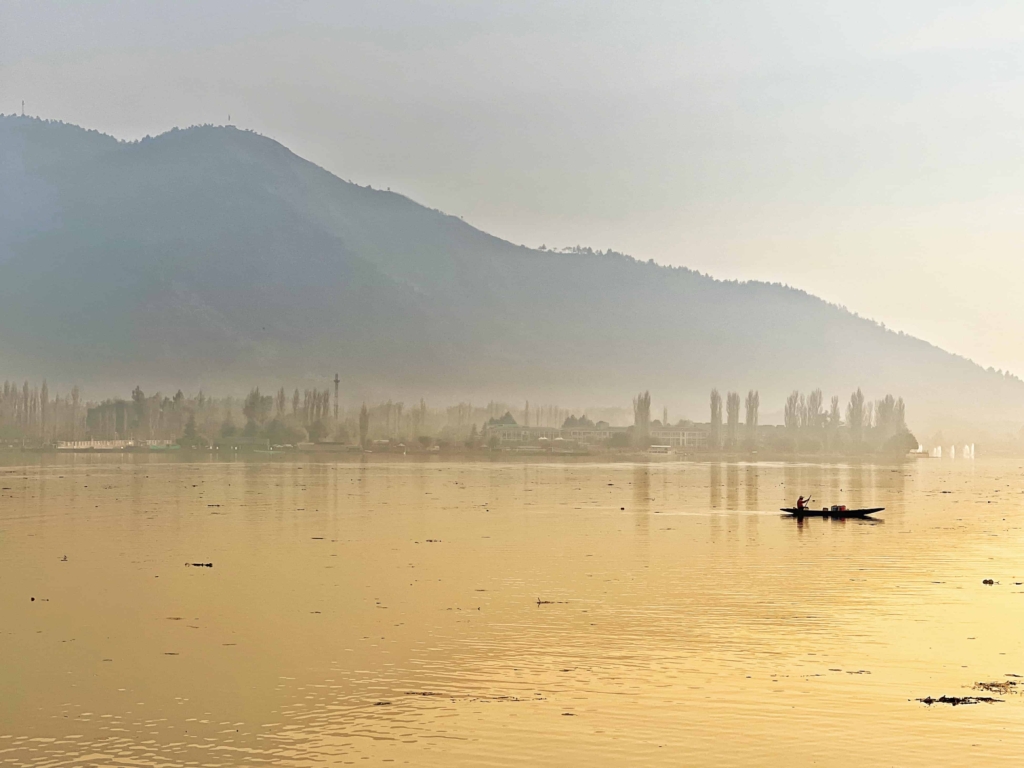
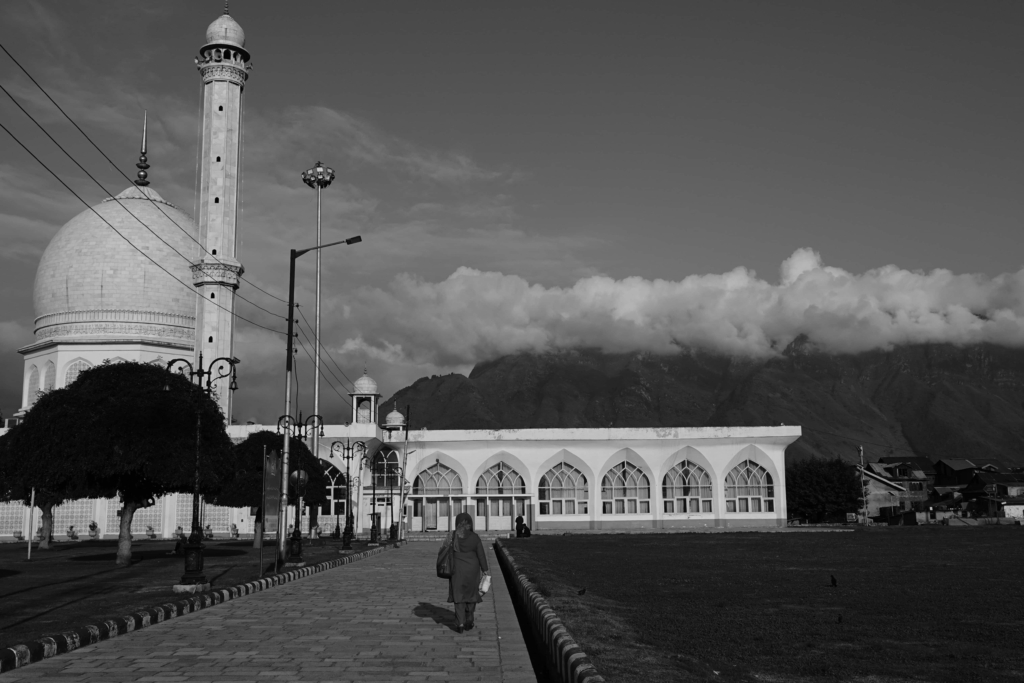
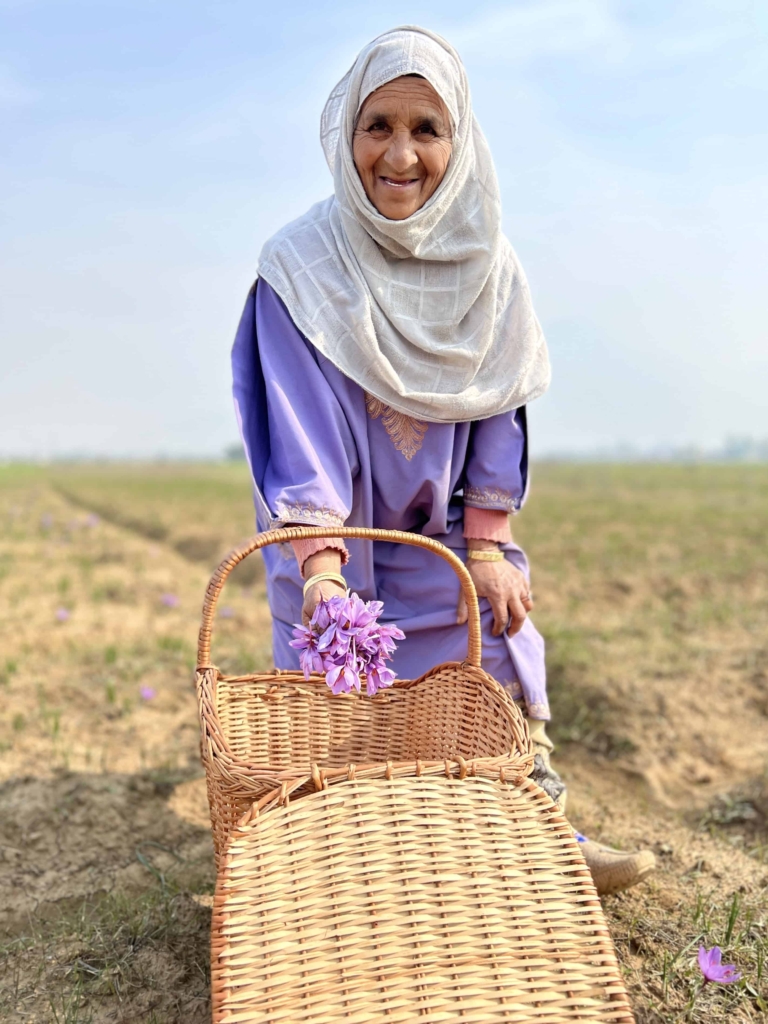
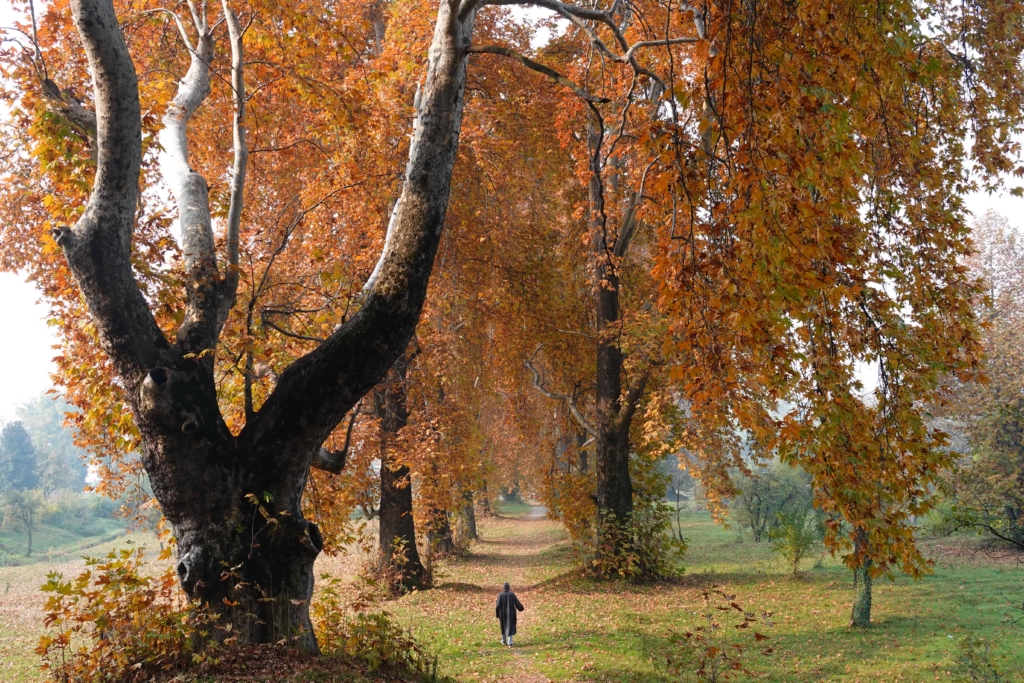

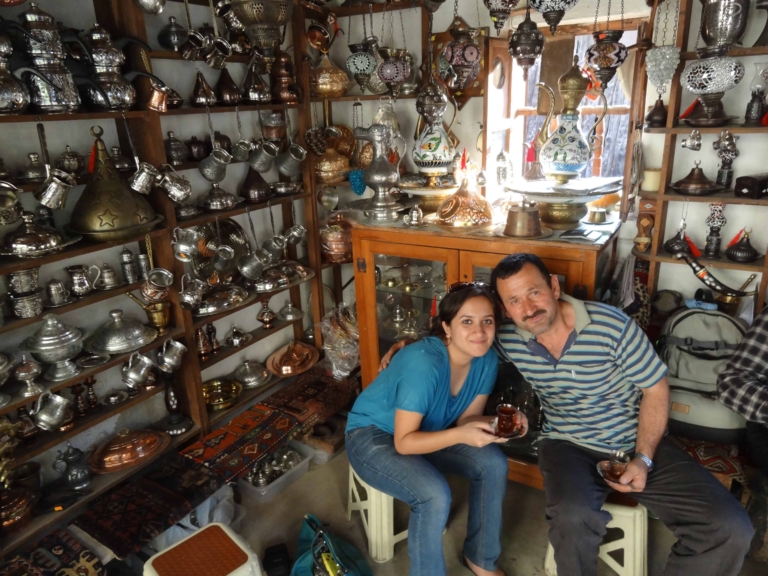
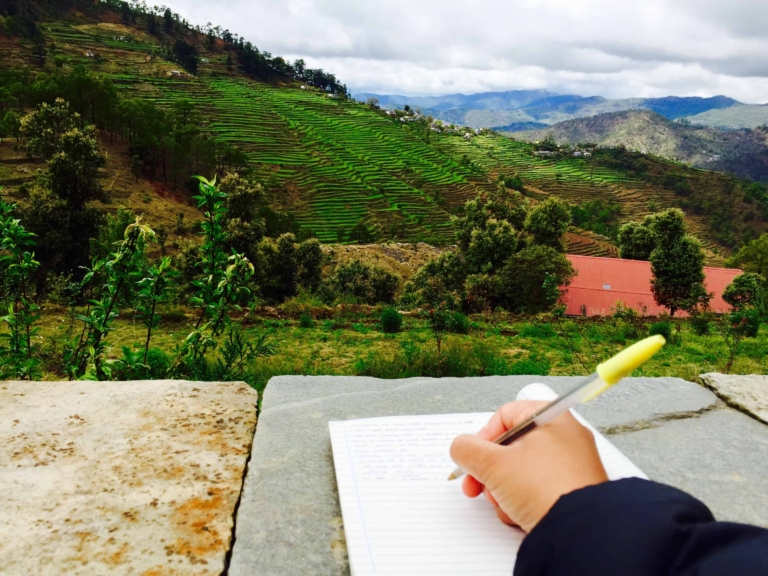
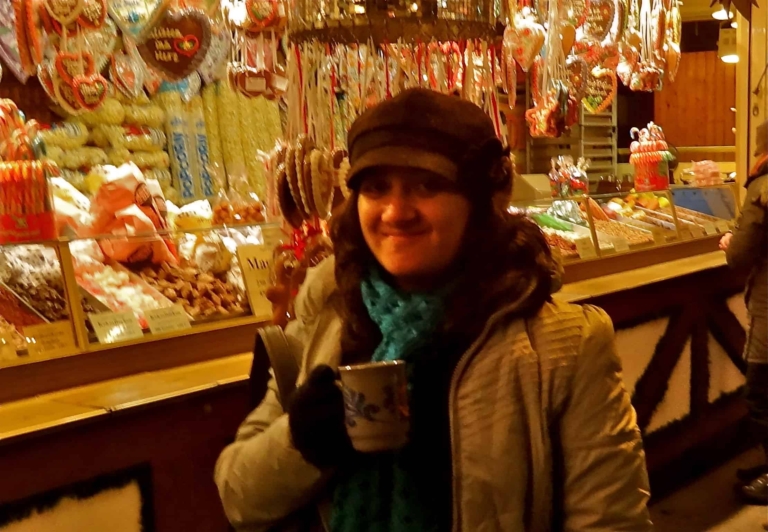
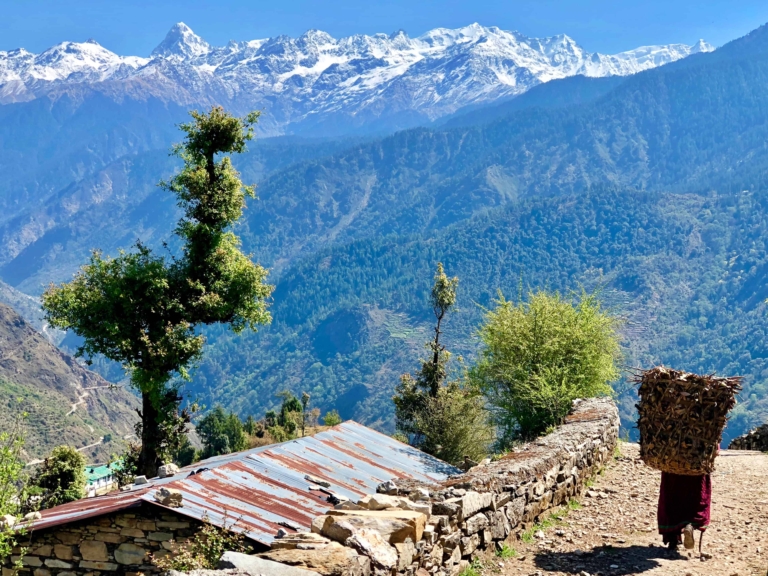
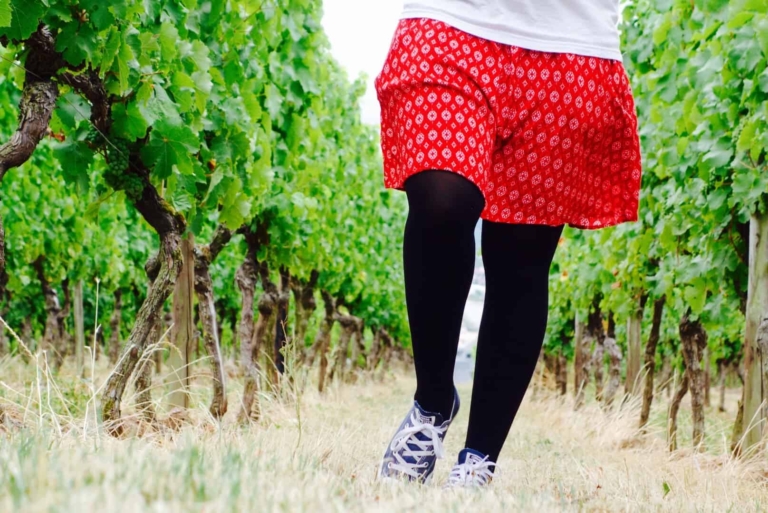
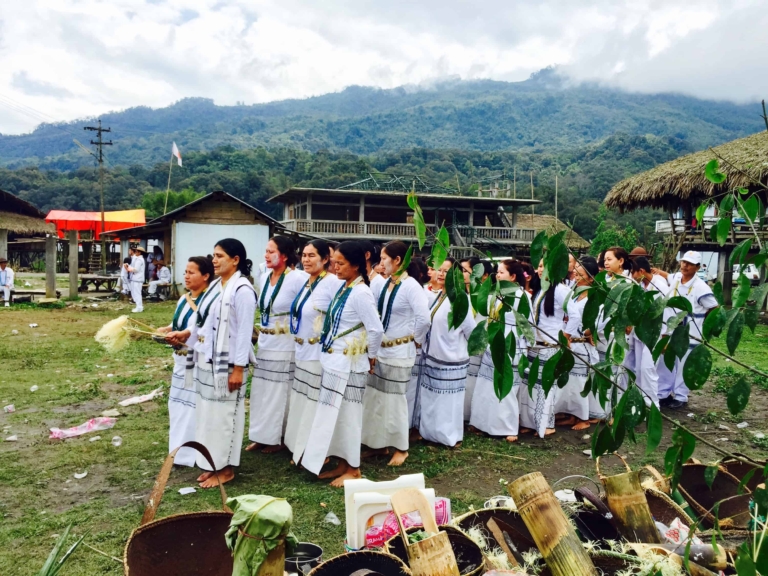
The article is as usual beautiful but coming from an Indian a statement like “relationship between Kashmir and India “ is really depressing. This statement hints at Kashmir not being a part of India but a separate entity.
Would you use the same language for any other state in India “relationship between Madhya Pradesh and India”?
Let’s not overanalyze what was a simple line questioning that relationship. It could also be between any other place and India!
Nice one Shivya. Yes, the times will change, the colors will turn. Lets hope for the best…
Really hope so, Sunil.
Delightful read. Maybe the autumn visit will happen this year!!
You’re going to love it. As late in autumn as possible 😉
Beautiful one, Shivya. Hope the tide turns for good. To many more autumns in Kashmir !
Hi Shivya,
Have always been a fan of your thinking 🙌🏻. With wishes for the colors to change quickly for Kashmir, thanking you for an incredible post.
Keep inspiring!!
Praveen
Thanks Praveen. And it’s high time we see more balanced narratives about Kashmir!
Sure hope so, Kushal!
Wonderful article 😊 I hope people around India start looking at Kashmir as a friend and not as an enemy.
You must visit Aru Valley next time. It robbed my heart❤️
I LOVED Aru Valley, but was so sad to see all the selfie-snapping daytrippers ruining the tranquility of the village with dust and honking.
Thank you for sharing your experience as I don’t know when I will get a chance to see the Kashmir you were able to see.
I hope you do very soon.
Thank you for writing such a heartfelt piece, covering all the aspects of Kashmir. Hopefully you will write more about the beautiful state.
So many stories to share but also have so much on my plate 😉
Most travelers have a mixed experience traveling through Kashmir. Just like any touristy place, there are all kinds of experiences.
Very true!
Well expressed. Having just returned from Kashmir, I quite agree with what you’ve shared and experienced most of the same as well. It’s a rather complicated relationship though – between the people of this region and the rest of the country. Also, we sensed a range of emotions from the local towards us. There were plenty with genuine warmth and friendship, but there were also those with abundant caution to complete disdain. One brush is impossible to paint them all.
PS: Lovely photo of the lady with the saffron flowers. And, the music school was shut while we were there; even more bummed about that after reading your description above
We had animated discussions with many locals, but never felt disdain – but like you say, there are all kinds of people, opinions and experiences, as anywhere else. Here it sure it more complicated than elsewhere though.
Too bad about the music school – but it’s always nice to have a compelling reason or three to go back 😉
Thank you for writing such a heartfelt piece.
Thanks for reading, Kristen!
Nice writeup and beautiful pics.
Tourists mostly interact with guides (most are on the face type,money oriented, irritating), cab drivers, hoteliers etc, and donot scratch the surface more than what is required for social media (am not judging them) but as a person who had visited Kashmir several times I would like to say many people with whom I got chance to interact addressed themselves as Kashmiris (again no issues here) and myself as an ‘Indian’, like from some other country. Many of them were openly inclined towards our notorious western neighbour. It felt strange and bad. But I also sensed that many of these people are totally disillusioned by a overwhelming cocktail of religion and politics. Their emotions are like heystack..somehow avoiding to come in touch with fire…Parallely a part of community( in minority as of now) sees their future with India. Its complex….
Such a beautiful experience from Kashmir. I recently visited Kashmir and able to connect with you a lot, its a beautiful place and people over there are so heart warming, most of them welcomed us with an open heart and our cab driver helped us in many ways out of the path. So, yes we can say if there is a beautiful place to visit which will connect your soul it’s Kashmir.
About autumn. . . Is early October or end October better for someone
Ike you who only wants to wander under the falling leaves of the chinar and find a local host.
Anjuli
I am going to Kashmir soon, so while finding info on Kashmir from a traveller point of view, I came across your blog… You have written a very beautiful story of Kashmir for me… and I love it… 🥰
I definitely will go again one day for the Autumn… Intrigue by ‘Autumn in Kashmir is like Poetry’ … lets…
Looking forward to exploring Kashmir with a more informed view!
I was planning to go to kashmir but because of certain reason the plans got dropped. This blog is again encouraging me to think about it again.
Hi, I live in Trinidad and Tobago, West Indies. I am in the process of making my bookings for my trip to Srinagar-Gulmarg-Pahalgam in July. I have travelled widely around the globe and liked the blog that gives true experiences and expressions. Keep it up!
Try to plan a visit to the Caribbean and the twin island of Trinidad and Tobago to experience its unique food and culture.